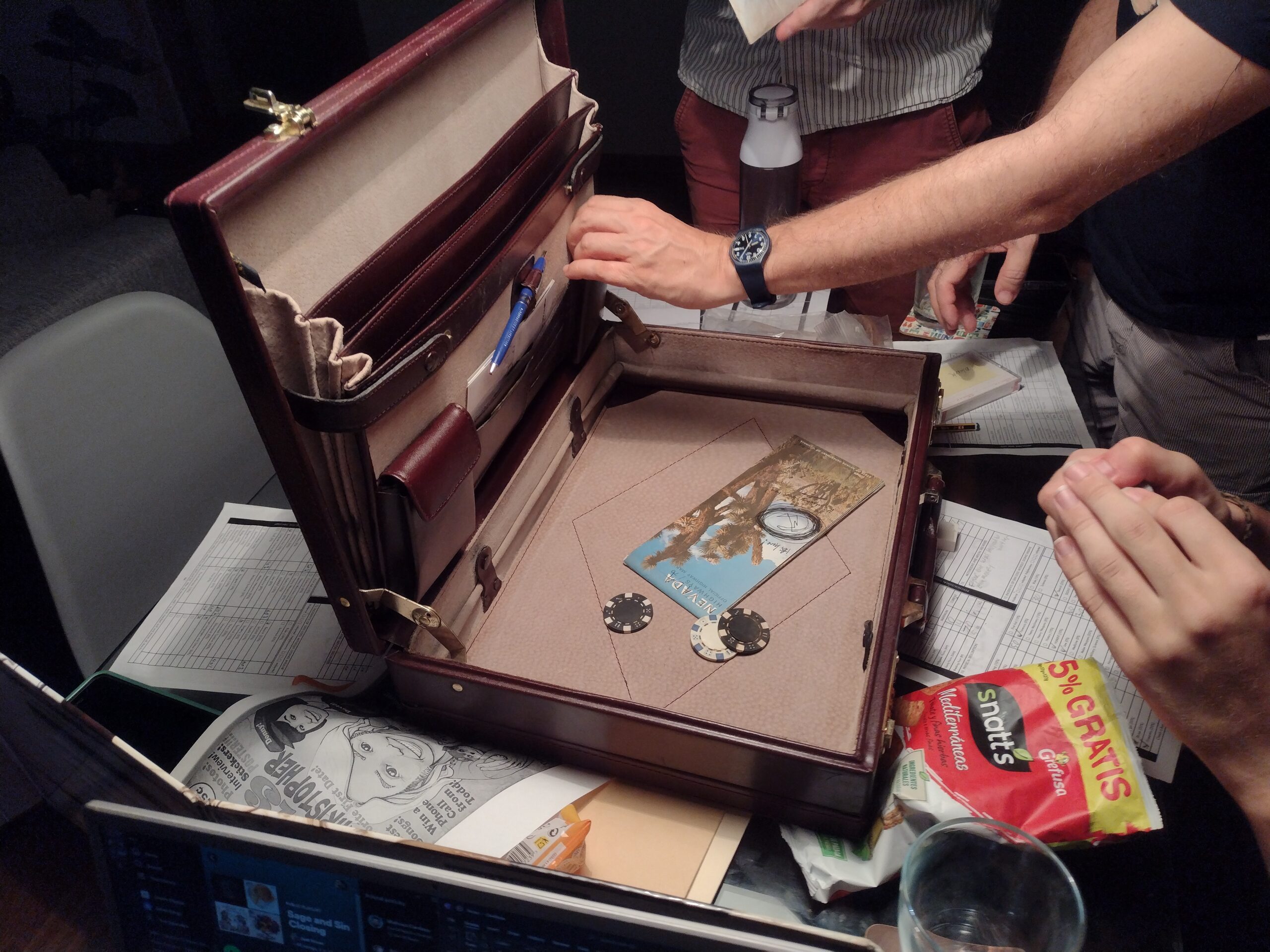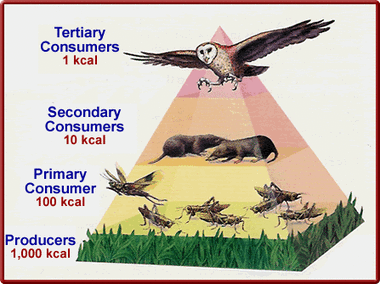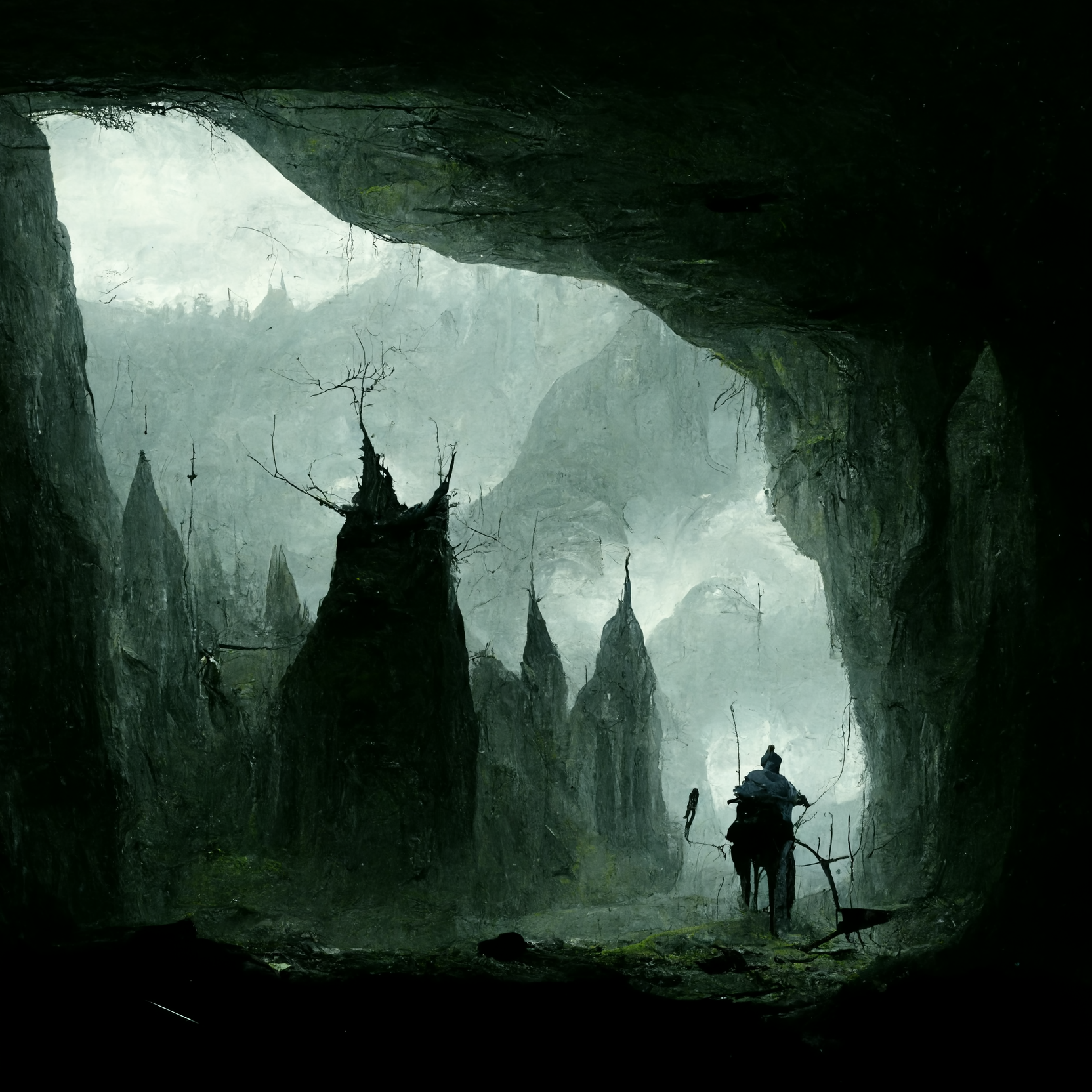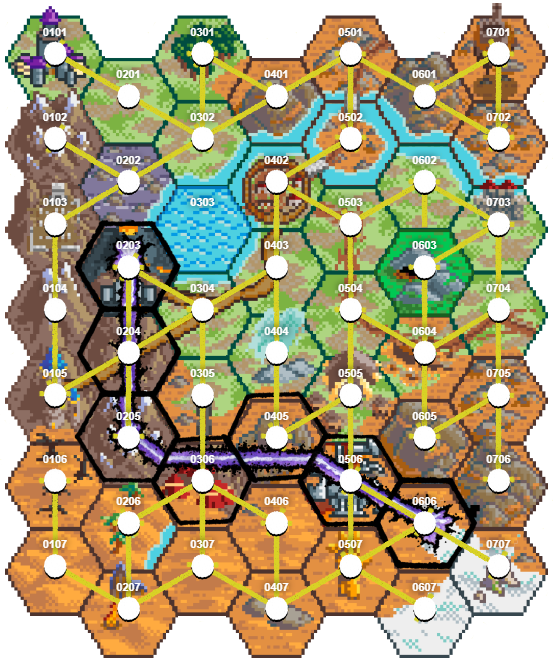Games don’t last forever. I really want them to but a perpetual game is an impossible goal by definition. So many cool things can emerge from a really long term game that strives towards that longevity but in my experience I haven’t been able to pull it off. Life happens. People move, schedules change. A gap between cancelled sessions goes too long and the game world grows fuzzy and forgotten. Or the players or GM gets bored with the type of campaign and wants to try something new.
I’ve designed a few sprawling sandbox campaigns with intrigue and hidden lore, 80% of which never get the chance to see the light of play. I know that this is impractical and against my own advice to focus on player facing lore, but it’s a guilty pleasure and I get lost in it. I’m also definitely not the only one who struggles with this problem of never satisfactorily finishing a campaign.

So if I acknowledge I am not going to get the years of play time needed to experience the emergent joys of a persistent forever campaign I can design a campaign that better fits my life as it is, not for an ideal version of it. A campaign where I can already see the end on the horizon when I ritually strangle the game to death on the appointed date. We can get to all the good stuff!
This is also less intimidating for new players. Signing up for a weekly event that has no end that may or may not be fun for them is a lot to commit to fit into a schedule. A campaign limited to just a couple specific months is a lot easier and lower pressure to plan on and fit into a busy life. The two campaigns that I managed to wrap up with a satisfying conclusion had less than 15 sessions and were planned to end by then. The feeling for both me and the players was sweet! Instead of abandoning the otherworld to gather dust frozen midway though we were able to get a fun sense of closure and enjoy the satisfaction you get from the feeling of completion as the game came to a definitive end.
Looking at my past games I’ve usually managed to play an average of like 13 sessions before the game ends. My record is ~23. I like to play weekly.
My current play goal is that my campaigns will be designed to end by 11 sessions. (+ or – 2). When designing a good limited run campaign I think there’s a few principles that are handy to keep in mind.

1. Define the Campaign’s Dramatic Question
This question is the theme of the campaign, the central pole that everything revolves around. Unlike a more meandering picaresque campaign style, there is a clear question this campaign is about. Most sessions contains some adventure content that impacts the ultimate answer to that question. These are SMART questions (Specific, Measurable, Achievable, Relevant, and Time-Bound) that will be definitively answered by the last session of the campaign.
Examples
Will the cult be able to complete its awful ritual?
Who murdered Lenore?
Can the marooned PC’s escape the cursed island?
Will the adventurers be able to survive the dungeon and get enough loot to pay off their debts before they explode?
Can the zombie plague be contained?
Will the Vikings decide to go to war?
Will the stolen Maltese Falcon be found in time?
Will the alien invaders conquer the city?
Can the bounty hunters hunt down John the Skinner?
Who will win the mayoral election?
Are robots sentient and will they get rights?
Will the crew be able to heist the casino?
Which warring party will gain the throne?
Can the Dark Lord be defeated before the Equinox?
Will the ragtag fleet survive long enough to find Earth?
2. The Player’s Actions Decide How the Campaign Question is Answered.
While more focused, this campaign format is not a railroad or a non-interactive movie. How the campaign’s dramactic question is answered is largely up to the actions of the player characters. The PC’s should be characters that have a goal and care about how the campaign question will be answered. I think it is of crucial importance that it is possible that they can fail in their goal of achieving a certain resolution to the campaign question.
This is, I think, one of the most important freedom’s in an RPG- the freedom to fail and see what interesting things happen from there.
An “If the Players Do Nothing” future timeline like the one in Deep Carbon Observatory which inspired the same section in Desert Moon of Karth is a handy way of having a default answer to the campaign question that you can tweak in response to player actions. Factions may also want to answer the questions in a specific way that may align or be opposed to the player’s interests. Using a dynamic faction system is another way to create an answer to the campaign question that surprises the GM too.
3. Start With a Possible Endgame in Mind
To wrap things up neatly there can be an awesome climatic event or location at the end that will hold the answer to the campaign’s main question, all the threads converging here at the final session. This climax or ultimate revelation or location might be soft gated by required information, allies, power, or items that can be acquired in other sessions adventures. I think it’s fun to write a sweet overdesigned set piece for an epic conclusion as long as the GM stays open to tweaking or even possibly throwing it out entirely and improvising if unpredictable player actions and campaign developments require it. Manufacturing the premise for a likely climactic scene where the question is answered can be cool as long as the way the climatic situation is resolved will be decided by what the players do and have done previously instead of having a prescripted outcome.
A crushing and specific defeat is a fine ending to a campaign, just as a resounding triumph. The important thing is that the question was answered in a definite way even if it’s something like “Now, we’ll never know.” or “Everything is doomed.” It’s fine if the players are able to skip a bit faster to the end through clever play. Since the resolution of the dramatic question is the purpose of the campaign the end is whenever the question is resolved by the players actions.
3. Connect Your Adventure Sites
I like to work in region based campaign design where several adventure sites are created in a specific constrained geographic region. In the excellent Silent Legions sandbox horror RPG, Kevin Crawford recommends starting with 9 adventure locations within your region (megadungeon, kingdom, city, wilderness, moon, whatever it is)- which seems like plenty for a limited run campaign. Each of these individual location adventures can be designed on a scale likely to be completed in a single session. This episodic format helps the campaign keep momentum towards and gives every session more variety than being filled with a single section of one location adventure.
The PC’s should always have enough information to keep them moving in an interesting direction. The players should know what the dramatic question of the campaign is by the very first session. Each adventure location has its own dramatic question (even if it’s as simple as a traditional “Can we loot this place and survive?”)
Most of the resolved answers to these questions draw the PC’s closer to answering the campaign’s question. In order to help make sure the PC’s have a lead they want to follow it’s good to offer at least 3 hooks (LINK three clue rule) that point to other adventure locations
That said, I like how there’s tons of X-Files episodes that are unrelated to the show’s central questions. The bendy hibernating guy who eats livers has nothing to do with the overarching alien conspiracy plot. But due to the limited run format of this campaign we need a higher ratio of campaign question related sessions to unrelated ones. Silent Legions recommends that 20% of adventure locations be unrelated to the central campaign premise. This seems like a nice number to give some variety to a focused campaign.
The Conspyramid diagram from Night’s Black Agents RPG is another handy tool that visualizes a campaign tracing the levels of a vampiric conspiracy as a sort of dungeon crawl towards the ultimate answer to the campaign’s dramatic question. I’ve focused some on investigation focused campaigns in this post but dungeon delving or wilderness exploration works with this same framework too. The party pursues their same goal of answering the campaign’s ultimate question “Can the PC’s find the lost Cloud Ship of The Weeping Autarch?” “Can the PC’s get to the inner sanctum of Badkill Dungeon and get the Doom Gem?”
\
Here’s an example campaign adventure site map I just threw together based on some partial notes from the limited 11 session Delta Green Nevada investigation sandbox game I ran to completion along with a couple campaign question unrelated location sites for variety. The dotted lines represents hooks or clues leading to other sites. The entire map (a 1976 highway map absolutely scribbled with location annotations, spooky sketches, cryptic expressions and stored in a combo locked leather briefcase along with some other weird props.) was made available to players near the start of the campaign to give them more info to make adventure choices.
5. Leave Wiggle Room In The Number of Sessions.
Players are unpredictable and wily creatures and some things will be a lot quicker or take more time than you anticipate. If a particular adventure takes two sessions instead of one. While you are putting some gentle pressure it’s not worth turning into a demanding wagon driver, spurring your players on faster. Sometimes they’ll find things interesting. With a bit of wiggle room for slow sessions, or unexpected left turns that have you scrambling to expand on the campaign world.
Also conversely if they breeze past content you find interesting to move on towards the ultimate question, you don’t need to drag them back to check it out. Just like you shouldn’t force your players to explore every single room of a dungeon, they don’t need to interact with every adventure site in your campaign. The goal of the characters is working towards answering the campaign question to their liking. If they bypass a few adventures on their way that’s just reasonable. If you want to entice them to explore more adventure sites, one way is to include useful contents in them that could help them make sure the resolution to the campaign’s dramatic question is the one they want (Resources, information, power, etc.)
6. Still Wanting More? Renew for Season 2!
Blades in the Dark RPG recommends treating each campaign like a season of TV that ends after a dozen sessions or so. The main questions get resolved by the end of the season. This chunks a campaign into discrete segments that allow for multiple satisfying end points whenever the campaign draws to a close. To start again, build on the events of the previous season and introduce a new dramatic question for Season 2. Since you’re not beholden to squeezing profits out of a dead horse you don’t need to crank out 33 seasons of The Simpsons- you can quit renewing whenever you find you or the table is satisfied with what they’ve gotten out of the campaign and interested in something fresh.

Related Reading:
https://slyflourish.com/breaking_endings.html
https://grognardia.blogspot.com/2024/05/how-do-you-end-campaign.html
https://dungeonfruit.blogspot.com/2024/03/beginning-of-end-how-to-finish-campaign.html




















